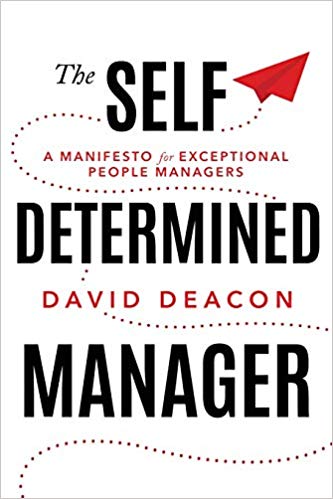
Why Managing Remotely is so Tough—and Eight Ways to Make It Easier
Managing remote teams is a whole different ballgame. Yet in the age of flex work, satellite offices, and telecommuting, mastering this skill set is no longer optional. David Deacon shares some best practices that help self-determined managers connect with employees at a distance
Managing remotely has quickly become the norm in today’s work world. And yet, it’s not easy. With more employees working remotely or on flex schedules, it can be tough to create the kind of connection you need to help people do their best work. You can’t pick up on non-verbal cues. You can’t tell if they’re having a good or bad day. You can’t have those quick, informal interactions needed to form comfortable, cooperative relationships.
This is why you must be intentional about projecting to your remote workers the kind of environment and team culture you want, says David Deacon.
“You must ask more, listen better, clarify more, explore challenges together, and engage on personal stuff in addition to work stuff,” says Deacon, author of The Self-Determined Manager: A Manifesto for Exceptional People Managers (Motivational Press, Inc., January 2019, ISBN: 978-1-62865-582-7, $19.95, www.selfdeterminedmanager.com)

Deacon says the best managers seek to intentionally shape work environments. He describes managers who excel at creating the best environments, where people thrive and great work gets done, as “self-determined managers.” This is challenging and relentless work even when everyone works in close quarters. So, when distance is a factor, a great manager must push even harder to build a positive culture and get the most out of their team.
Here are eight things the best managers do to successfully lead remote teams:
They keep in touch. Great managers connect with their people by email, Skype, or phone conversations. This isn’t an occasional event either; it’s a regular and predictable conversation that they look forward to.
They focus on more than tasks. The best managers know they need to show that they worry about everyone’s successes and challenges. It’s not only about the project or job at hand.
They talk about personal stuff and professional stuff. Being remote doesn’t mean treating people like distant relatives. Good managers master the art of chatting and also take time to discuss and share information about what’s going on.
They even talk about themselves a little. They know that managing well is personal, and they don’t forget this just because their team member isn’t in the room with them that day.
They listen more carefully. The greatest managers listen more when they are talking with people who aren’t in the room with them. They are more attentive, more alert for signs and clues, and more conscious of the need to understand what is really going on.
They get really clear about what they need done. They know the goals their employee needs to achieve and what standards need to be met. They know it’s harder to course correct along the way when everyone is remote and that less time together requires more clarity up front.
They ask more questions too. Great managers ask questions about context, about things that get in the way, about local relationships, and about resources. They make fewer assumptions that they know how things are or what would be best, so they inquire more and assume less.
They do more coaching. They do so not because remote employees need more coaching than other team members, but because there is a ton of value in exploring alternatives and options, and that’s what coaching is. As a result, a large part of the conversation is the manager and the remote worker together coming up with great solutions given the environment the employee is working in—talking about priorities, and resources, and opportunities, and possible pitfalls, and choices.
“Bad managers do the opposite of these things,” adds Deacon. “They listen less, not more. They make assumptions and do not offer help. They gather information they need but do not share. They give tasks without offering support. They take little interest in the person on the other end of the line. And they do not look forward to the conversation but see it as a chore.”
To steer clear of these mistakes, grab a post-it and write out the following checklist. Refer to it before you connect with your remote team. When you’ve covered all five of these items, you’ll have had a really good call with them.
- Inquire more, much more
- Get really clear about goals and standards
- Explore options together
- Share—personal and professional
- Support well by assuming less
“It takes a conscious effort to avoid the pitfalls of managing remotely,” he concludes. “You can get the best out of your remote workforce by showing up for your team and projecting a supportive environment to them. Anything less and you’re missing a valuable opportunity to get the very best from your people.”
About the Author:
David Deacon is the author of The Self-Determined Manager: A Manifesto for Exceptional People Managers. He has been a human resources professional for over thirty years and passionate about how managers manage for almost as long. He has worked for a variety of the world’s leading companies, including Credit Suisse and MasterCard, and has lived and worked in the US, the UK, and Asia.
A thought leader in the fields of learning and development, talent management, and leadership development, Deacon has influenced leaders and teams around the world and created better-managed companies as a result. Recognized by the Best Practice Institute as a “Best Organizational Practitioner” in 2014, he continues to drive impact through leading world-class talent management approaches in the companies where he works.









